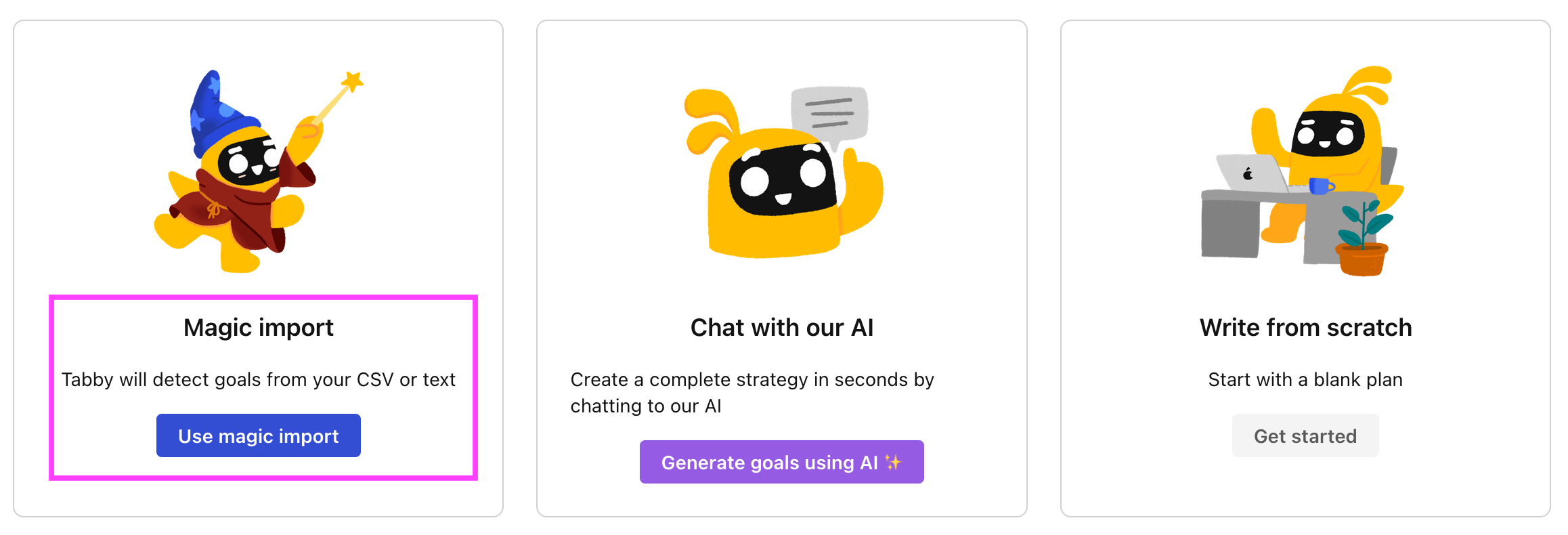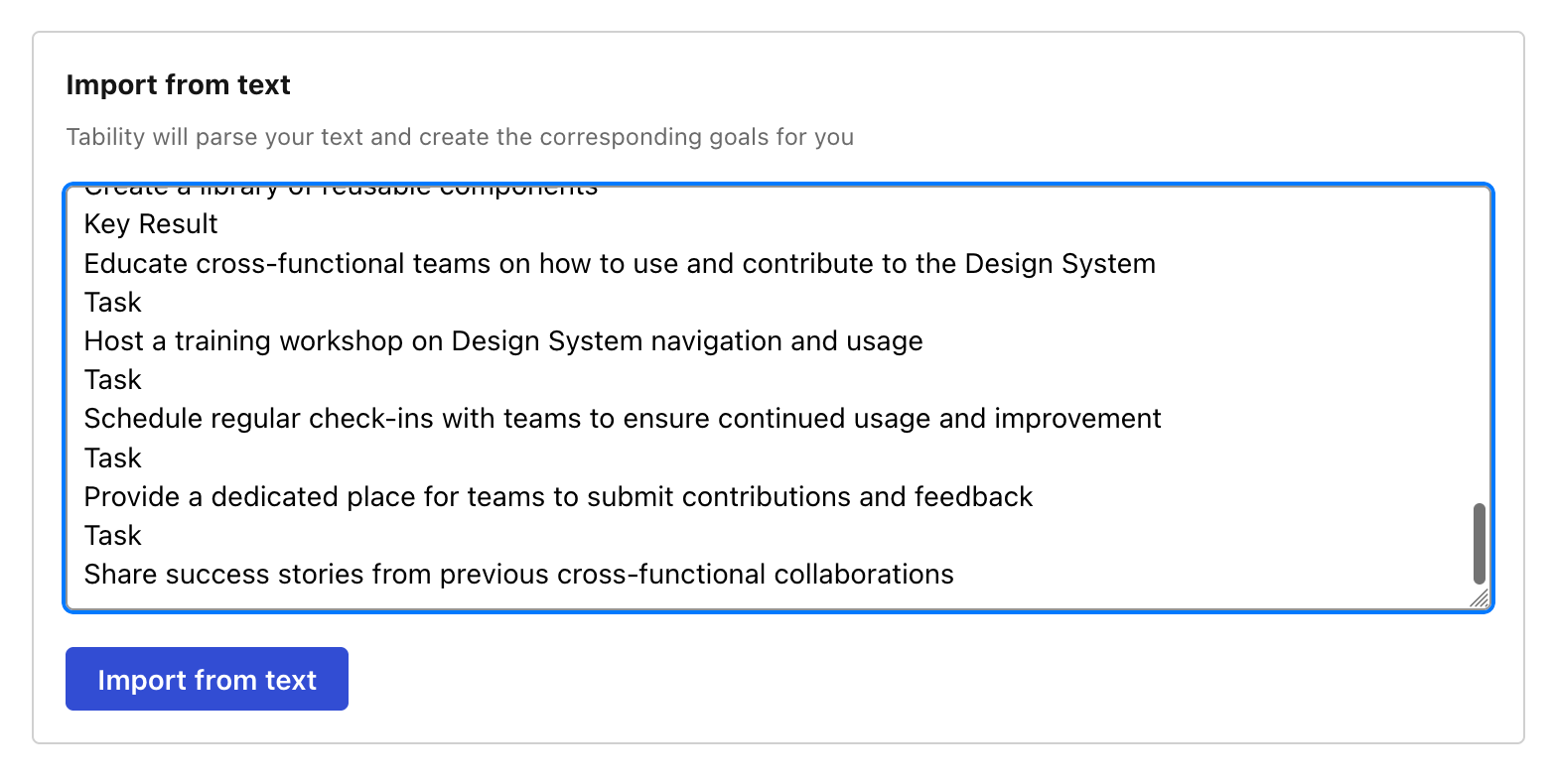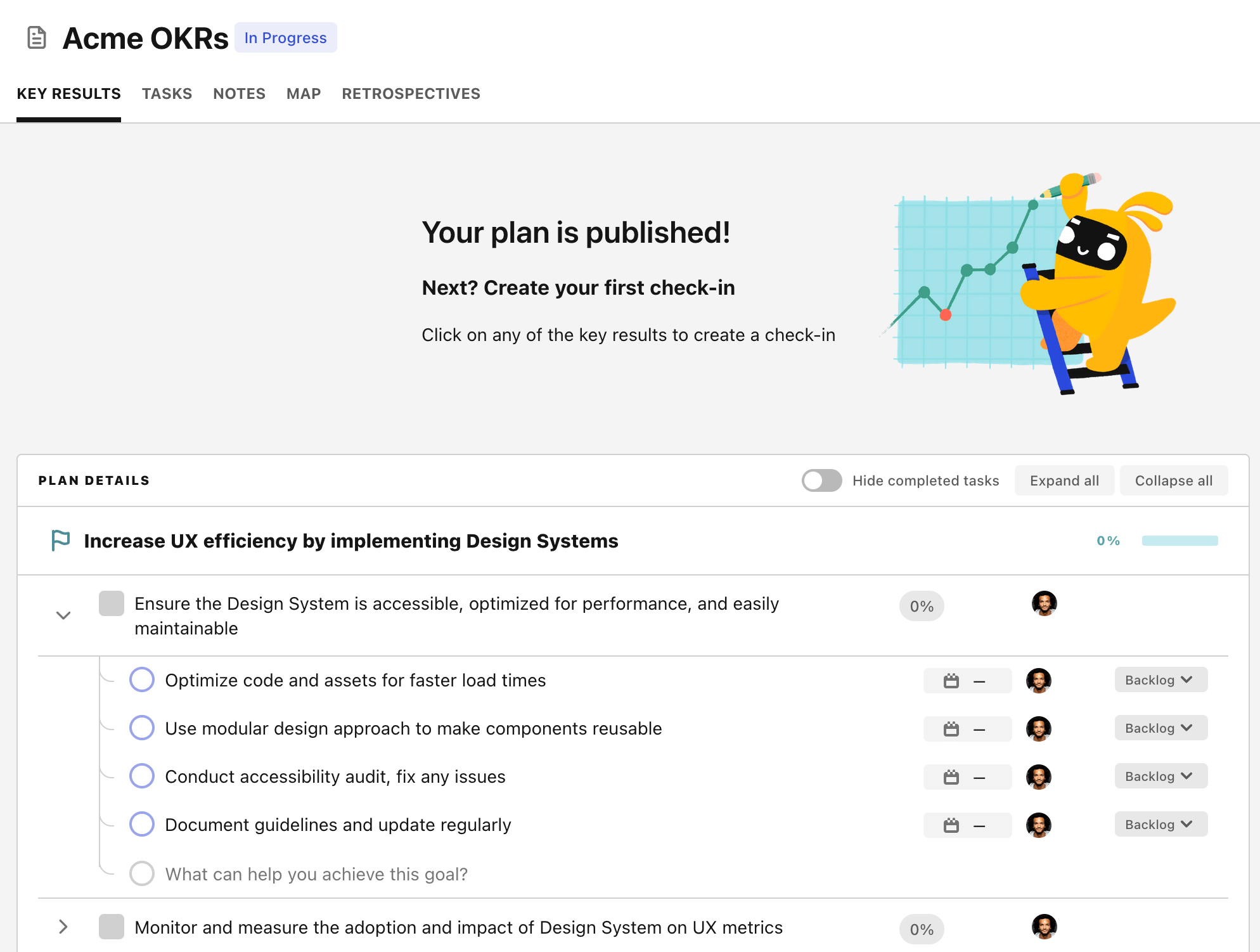OKR template to implement and optimize the OKR framework for effective tracking
Your OKR template
Secondly, the OKR intends to raise the visibility of the OKR tracking process to a point where all staff members are aware of it. This requires a company-wide communication about the process, regular awareness training, and a user-friendly guide on how to use the OKR tracking software.
Lastly, the OKR aims to attain at least an 80% satisfaction rate with the framework from the teams using it. This will entail improvement plans based on feedback, regular check-ins to identify team issues, and ongoing training on the framework.
The main objective is to ensure the OKR framework is embraced company-wide and its benefits reaped fully. It requires taking feedback seriously, encouraging broad adoption of the tool, and cultivating awareness and understanding among all staff members about its operation and significance.
ObjectiveImplement and optimize the OKR framework for effective tracking
KRIncrease adoption rate of OKR framework by minimum 75%
Regularly review and provide feedback on OKR utilization
Train staff on benefits and functionality of OKR framework
Implement incentives for consistent usage of OKR
KREnhance visibility of OKR tracking process to 100% staff awareness
Initiate company-wide communication about OKR process
Conduct regular OKR awareness training
Create user-friendly OKR tracking software guide
KRAchieve at least 80% satisfaction rate from teams using OKR framework
Implement improvement plans based on team feedback
Conduct regular check-ins to identify any issues with teams
Provide ongoing training on the OKR framework
How to edit and track OKRs with Tability
You'll probably want to edit the examples in this post, and Tability is the perfect tool for it.
Tability is an AI-powered platform that helps teams set better goals, monitor execution, and get help to achieve their objectives faster.
With Tability you can:
- Use AI to draft a complete set of OKRs in seconds
- Connect your OKRs and team goals to your project
- Automate reporting with integrations and built-in dashboard
Instead of having to copy the content of the OKR examples in a doc or spreadsheet, you can use Tability’s magic importer to start using any of the examples in this page.
The import process can be done in seconds, allowing you to edit OKRs directly in a platform that knows how to manage and track goals.
Step 1. Sign up for a free Tability account
Go tohttps://tability.app/signup and create your account (it's free!)
Step 2. Create a plan
Follow the steps after your onboarding to create your first plan, you should get to a page that looks like the picture below.

Step 3. Use the magic importer
Click on Use magic import to open up the Magic Import modal.
Now, go back to the OKR examples, and click on Copy on the example that you’d like to use.

Paste the content in the text import section. Don’t worry about the formatting, Tability’s AI will be able to parse it!

Now, just click on Import from text and let the magic happen.

Once your example is in the plan editor, you will be able to:
- Edit the objectives, key results, and tasks
- Click on the target 0 → 100% to set better target
- Use the tips and the AI to refine your goals
Step 4. Publish your plan
Once you’re done editing, you can publish your plan to switch to the goal-tracking mode.

From there you will have access to all the features that will help you and your team save hours with OKR reporting.
- 10+ built-in dashboards to visualise progress on your goals
- Weekly reminders, data connectors, and smart notifications
- 9 views to map OKRs to strategic projects
- Strategy map to align teams at scale